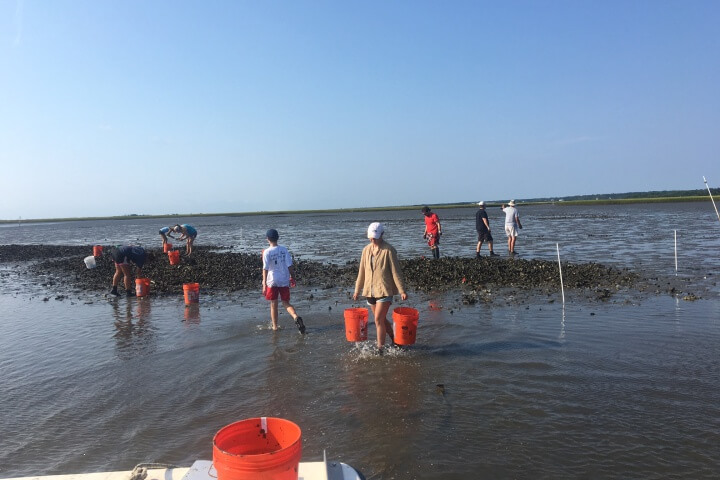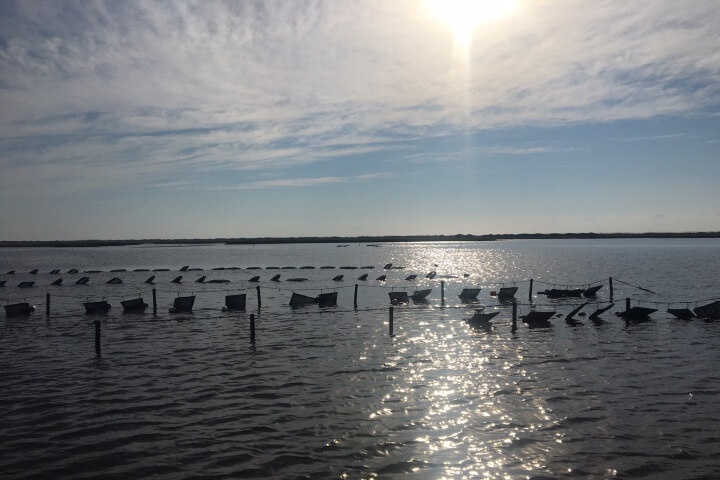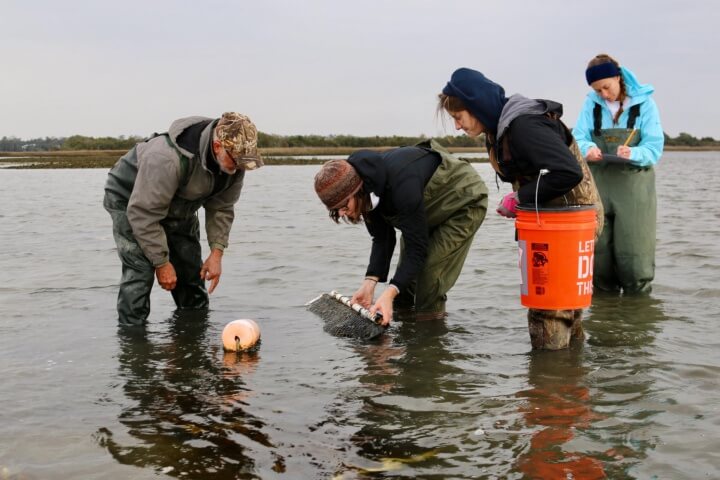
North Carolina’s shellfish aquaculture industry has been small but stable for over thirty years, however, regulatory changes are creating a climate for potential rapid growth. With a popular wild oyster fishery and growing interest in creating new oysters farms, natural resource managers need additional science to help them weigh risks and benefits and decide where and when to permit new oyster aquaculture leases. Wild oyster populations provide a range of well documented ecosystem services, including improving water quality and providing habitat for a suite of other aquatic animals. When this project began, there was limited data and no clear consensus about whether shellfish aquaculture, as used in North Carolina coastal waters, had similar benefits.
To help inform oyster farm siting and permitting, this project evaluated the potential ecosystem services and impacts of newly established oyster farms in intertidal and subtidal coastal areas. The project combined intensive field sampling with lab experiments and farm-scale modeling to study water quality and ecological impacts. The project generated information, visualization tools, locally calibrated oyster farm models, and a decision support framework to help resource managers and oyster growers assess locations and scales of aquaculture operations. Project results have been shared with state agencies and newly formed committees tasked with guiding the expansion of shellfish aquaculture in North Carolina.


